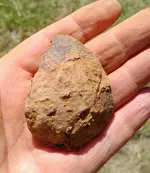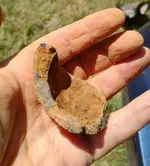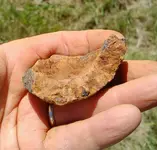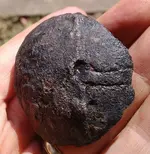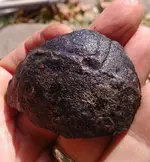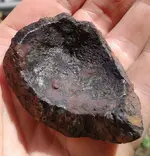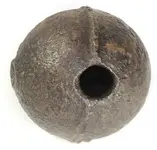Need you to use a caliper or whatever else can give an extremely precise measurement of the shellwall's thickness. In the photos, the thickness seems to vary. If so, that means crude casting, the cavity unintentionally being cast off-center. That would indicate the frag is from a 6-Pounder shell, or possibly a 4-Pounder. You'd need to do some historical research to see whether or not any 6-Pounder or 4-Pounder cannons got used at that battlesite.
You can make a template to check the frag's diameter. The diameter of a 6-Pounder ball is about 3.58-inches. The diameter of a 4-Pounder cannonball is about 3.12-inches. Use a compass to make a pencil (or ink) circle which is the desired diameter (3.58") on a piece of thick cardboard. Then use a razor knife to cut out the inside of the circle. Carefully place the fragment's outer curve against the edge of the round hole in the cardboard. If it fits fairly neatly into the hole's curve, the frag is from a 6-Pounder shell. If not, cut a 3.12-inch hole in the cardboard. Of course, you'll need to remove the rust-&-dirt encrustation off the outside of the frag to be able to do this "arc test."
By the way... you're right, pre-20th-Century grenades that were round-bodied did tend to have a thinner shellwall than cannon roundshells of the same size.
Your mention of finding Bar-Shot at that site indicates it is a Colonial/RevWar/War-of-1812 battlesite. If so, that would exclude the presence of Case-Shot shells, because those didn't exist until Briton Sir Henry Shrapnel invented that type of artillery ammunition a year or so after the end of combat in the American Revolution.



